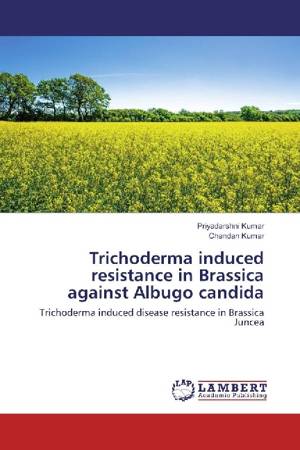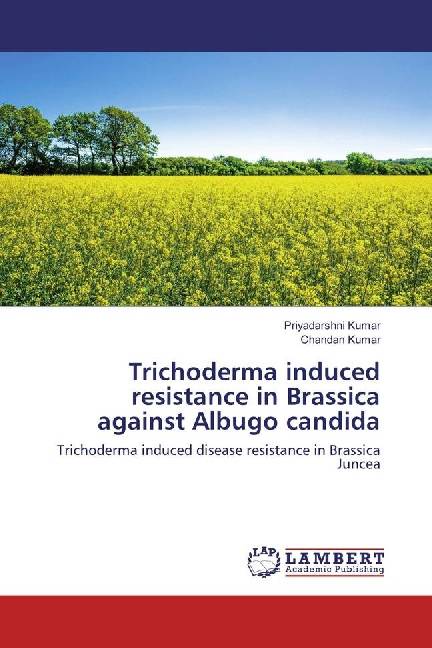
- Afhalen na 1 uur in een winkel met voorraad
- Gratis thuislevering in België vanaf € 30
- Ruim aanbod met 7 miljoen producten
- Afhalen na 1 uur in een winkel met voorraad
- Gratis thuislevering in België vanaf € 30
- Ruim aanbod met 7 miljoen producten
Zoeken
Trichoderma induced resistance in Brassica against Albugo candida
Trichoderma induced disease resistance in Brassica Juncea
Priyadarshni Kumar, Chandan Kumar
Paperback | Engels
€ 55,45
+ 110 punten
Omschrijving
The rapeseed mustard plants are important edible oil crops cultivated worldwide. The yield and quality of the oil seeds get affected by infection of microorganisms and insect infestation. Biological control provides an excellent alternative to chemical control in reducing the damage caused by plant pathogens without leaving any chemical toxic residue. Biocontrol agents such as Trichoderma reduce growth, survival or infections caused by various pathogens and induce resistance against several intruders employing mechanisms like competition, antibiosis, mycoparasitisms, hyphae interactions and enzyme secretion. Trichoderma spp. systemically activate plant disease resistance against various fungal pathogens in several crops through Mitogen-Activated Protein Kinases. The kinases activities may get deactivated by respective phosphatases. It also enhances production of antioxidant enzymes and level of cellular ROS to counter the pathogen attack. Here, attempts were made to delineate biochemical and molecular insights for understanding of defence during bipartite interactions of Brassica- Trichoderma as well as tripartite interaction of Brassica- Trichoderma-Albugo candida.
Specificaties
Betrokkenen
- Auteur(s):
- Uitgeverij:
Inhoud
- Aantal bladzijden:
- 144
- Taal:
- Engels
Eigenschappen
- Productcode (EAN):
- 9783659781384
- Uitvoering:
- Paperback
- Afmetingen:
- 150 mm x 220 mm

Alleen bij Standaard Boekhandel
+ 110 punten op je klantenkaart van Standaard Boekhandel
Beoordelingen
We publiceren alleen reviews die voldoen aan de voorwaarden voor reviews. Bekijk onze voorwaarden voor reviews.











